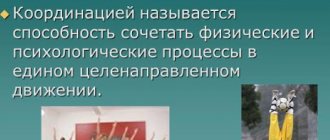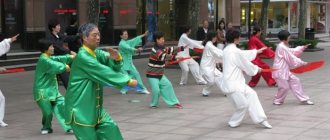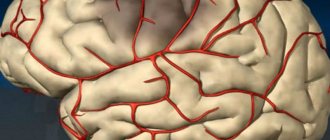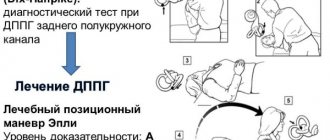- home
- Correction
Logoneurosis, or stuttering during speech, is a pathological condition in which a child or adult repeats or prolongs sounds, syllables and words.
Articulation in logoneurosis is accompanied by convulsions of the organs of the speech apparatus or long stops when moving from one sound to another. Symptoms of stuttering appear at an early age if their basis lies in a genetic predisposition to pathology, in congenital diseases of the central nervous system; at any period of life, if the cause of the disease is stress, fear, psychological trauma.
Stuttering is divided into neurotic and neurosis-like. The first are treated therapeutically: breathing exercises, hypnosis, psychological and speech therapy assistance to the child. Special attention should be paid to the atmosphere in the family, relaxation, sports, and singing. The second, neurosis-like, require the use of antispasmodics, tranquilizers, several courses of dehydration, massage and physiotherapy.
Breathing exercises are useful for the treatment of any type of stuttering, as well as its prevention at an early age in children. If you perform the exercises in strict sequence, according to instructions and regularly, then in 70% of cases the prognosis for the recovery of preschool and school-age children is favorable.
The essence of breathing exercises
Breathing exercises for stuttering for children are a set of special exercises for relaxing and toning the muscles of the speech apparatus. With the help of simple tasks, the child will learn to breathe correctly, establish the rhythm and pace of inhalations and exhalations.
Speech therapists and parents can use several types of breathing exercises for stuttering:
- Traditional method. It includes a series of exercises to train the abs, diaphragm, and form conscious regulation of free breathing during a conversation.
- Breathing technique according to A. N. Strelnikova. Suitable for the treatment of speech rhythm disorders and the human respiratory system. The method is based on the activation of the whole organism, promotes health, gets rid of speech disorders, asthma, adenoids.
It is not necessary to choose between stuttering correction methods; you can use several methods at once.
Gymnastics for logoneuroses can solve the following problems:
- Form relaxed breathing while speaking
- Eliminate fear of articulation
- Relieve muscle spasm of the vocal apparatus
- Improve brain function due to the flow of large amounts of oxygen
- Teach your child articulation control
- Strengthen the muscles of the abdominal cavity, diaphragm, nasopharynx
- Restore the body's biorhythms
Important! There is no need to count on quick results from using breathing exercises for stuttering. It will take at least 3-6 months to solve speech problems if you practice regularly.
What is stuttering like?
Depending on the nature of the violation, there are:
- neurotic stuttering, or logoneurosis, which is a functional disorder;
- organic (neurosis-like) stuttering caused by lesions of the central nervous system.
- In terms of severity, stuttering can be:
- mild degree, characterized by slight hesitations in coherent speech that practically do not interfere with communication;
- moderate degree - quite noticeable hesitations appear in speech (both monologue and dialogic), sometimes preventing the child from finishing a sentence, and difficulties arise in communication;
- severe - prolonged spasms of the speech muscles, constant hesitation in speech of all types, communication is very difficult or even impossible, later logophobia (fear of speech), embolophrasia (use of “wet” words), convulsive movements of the facial muscles, muscles of the arms, legs may be added .
- Depending on the nature of the course, stuttering occurs:
- wavy - in different situations it can intensify or weaken, but does not disappear;
- constant - with a stable flow;
- recurrent – occurs periodically during normal speech.
- clonic - the baby repeats the first sound or syllable in the words: k-k-k-doll, de-de-de-grandfather; the clonic type is more often observed at the very beginning of the disease;
- tonic - this type is characterized by pauses both at the beginning and in the middle: dog....chka, p...poop; the baby speaks with noticeable tension;
- mixed, including both clonic and tonic types.
When stuttering, convulsions can occur in the articulatory, respiratory or vocal parts of the speech apparatus. Depending on which department is affected, articulatory, respiratory, vocal or mixed forms of stuttering are distinguished.
General recommendations
The effectiveness of breathing exercises for children against stuttering largely depends on the quality of task completion. The child and the adult must enjoy the training, otherwise months of training will not give a positive result. An equally important role is played by the psychological atmosphere during the lesson, good relations between the patient and the teacher, and comfortable conditions for conducting the lesson.
When performing breathing exercises for stuttering with children, follow these recommendations:
- Ventilate the room before starting the lesson. Monitor the humidity and temperature in the training room, they should be comfortable: 18-20 ° C, 40-50%.
- Feed your baby 1-2 hours before training. Children should not exercise hungry or immediately after lunch.
- Eat food 1 hour after the end of class. The abdominal muscles should calm down and return to normal after physical activity.
- The lesson should last no more than 20 minutes, plan classes for the afternoon and morning. To achieve maximum results, you need to work with your child 2 times every day.
- If your baby is choking or loses his breathing rhythm, stop the workout. Children may become unconscious due to too many deep breaths. Monitor your child's condition throughout the lesson.
Important! If a child’s stuttering is combined with pathologies of the respiratory system, consult a doctor before starting training using any system. For such a child, the workload and schedule of classes should be regulated by the attending physician.
Other methods for correcting pronunciation when stuttering
Also in speech therapy practice, an effective relaxation method is actively used. To stop stuttering and learn to relieve spastic muscle tension, your child should be able to relax. To do this, ask him to clench his hand into a fist, then relax it, spread his fingers to the sides, then place his hands calmly on his knees, etc. This kind of exercise actively helps with neurotic stuttering in adolescents.
It has long been noted that stuttering disappears while singing. Therefore, vocal classes are recommended for people suffering from this speech disorder. Vocal lessons will help both children and adults. The sooner this practice is started, the easier and faster it will be to cope with stuttering.
Breathing exercises
Breathing exercises are performed sitting and standing. It is important to stand in front of a large mirror to control the position of the body, the straightness of the back and the work of the facial muscles. Each task is repeated three to five times. The teacher or parent works together with the child, showing the example.
Long exhalation
Recommended for children to relieve spasm and tone from the larynx:
- the child sits on a chair in front of the mirror;
- keeps your back straight and your shoulders at the same level;
- inhales air into the stomach through the nose, tries to feel how the abdominal cavity is filled with oxygen;
- makes a long exhalation through the mouth, lips can be curled into a tube, counts to 5-10. It is very important not to arch your back or move your head along with your breathing.
Air shocks
The exercise helps the preschooler learn to control the rhythm of breathing and the force of exhalation:
- take a deep breath into your stomach through your nose;
- exhale in sharp and short bursts through your mouth;
- monitor the tension of the abdominal muscles;
- While exhaling, count the number of pushes; you should try to increase this indicator from session to session.
Yawn with sound
When completing the task, the clamp is removed from the muscles of the neck and larynx:
- sit up straight;
- inhale deeply through your nose;
- exhale for a long time with your mouth open, as if you are yawning;
- voice your exhalation: “A-ah-ah...”;
- As you exhale, your head should be slowly lowered to your chest.
Smile “Ee-e-e”
This exercise helps you learn how to exhale long. This is useful for pronouncing sentences and complex words without stopping:
- head straight, inhale slowly and deeply into the stomach;
- stretch your lips into a smile;
- begin to exhale slowly through your mouth and at the same time say: “E-I-I...”;
- exhalation lasts as long as possible.
On a note! To make it interesting for your child to do breathing exercises, organize competitions: who can sustain the sound longer, who doesn’t raise their shoulders during class, and so on.
Snowstorm
The exercise teaches the child to regulate the length of sound pronunciation, strength and timbre of the voice:
- inhale air into your stomach;
- fold your lips into a tube;
- pronounce the sound “U” loudly and roughly at first. Then gradually reduce the volume and strength of articulation, as if moving in a circle.
O-A-U-I
The task combines sound pronunciation and hand movements according to the following scheme:
- the letters are pronounced in a certain sequence O, A, U, I. Pauses between articulations are not allowed, you need to sing the complex in one breath;
- simultaneously with sound pronunciation, you need to make movements with your hands for each letter;
- “O” we draw a big belly with our hands, “A” we raise our hands up and stroke our cheeks with our palms, “U” we stretch our arms forward, “I” we return our hands to the position in front of us and stretch them to the sides, we draw a smile under the chest. This exercise helps to remove the clamp in the larynx and lengthen the articulatory exhalation.
Watch this set of breathing exercises in video format:
Work on the prosodic side of speech
People who stutter have underdeveloped prosody, which requires correction. The formation of expressive and intonationally correct speech when stuttering includes stages of work on the development of timbre, strength, melody, and voice intonation coloring. In addition to working on your own speech, it is recommended to observe the people around you and analyze how the sound of your voice may differ in emotional coloring, expressiveness, etc. You can use the following exercises for stuttering.
Task 1: “Say kindly.”
This exercise develops such a phonological component as timbre. It is necessary to affectionately repeat as many words as possible in the sentence, while intonationally noting the completeness of the speech. For example, the original “a cat is sitting on a tree” will sound like “a cat is sitting on a tree.”
Task 2: “Blizzard”.
It will help to form such a prosodic side as the strength of the voice. The exercise in its complex performs a number of other functions: articulation, breathing.
Sit in a comfortable position so that your arms and shoulders are relaxed. The lips are folded into a tube, we sound the blizzard. To do this, we say “Ooh” first loudly, then more quietly, gradually lowering our voice to a whisper.
Task 3: “Traffic light”.
This game can be played even on the street. An adult stands with the colors of the traffic light, showing one of the circles to the children. Movement occurs in accordance with color. On red - stop, on yellow - slowly and on green - the child runs fast. The game is accompanied verbally, in accordance with the movements, with the sounds of the motor “Zh-zh”. This game can also be used in classes to develop speech therapy rhythm.
Game exercises
Games for stuttering can be divided into two types: relaxing and rhythmic. The first ones relieve spasms of the facial muscles; they should be carried out in the evening, at night. The latter work as a simulator for practicing breathing rhythm and developing speech speed. Offer active games to your child in the first half of the day.
Football
An exciting game for normalizing the pronunciation of sounds when stuttering. You will need a large piece of cotton wool and several toys to organize a team. The child puts the cotton wool in front of him, takes air into his lungs with his nose and blows on it with his mouth, tries to score a goal with an improvised ball into the goal of his plush opponents. Place bears and hares 40-50 cm away from the child on the table. Be sure to say in which direction the fleece should roll so that the air stream is directed towards the target.
Don’t forget to praise your child for correctly completed tasks, and encourage the spirit of competition and excitement.
Chick
The child improvises birdsong using any vowels. It is important to inhale the air through your nose and hold out the sound for as long as possible. Offer to sing not only evenly, drawn-out, but also to make sonorous modulations: a-a-a-o-o-o-o-u-u-u, i-i-i-e-e-e-e-e and others.
Do the math
The child puts his hand on his tummy and takes a deep breath through his nose. Bends the fingers on his free hand, counts the fingers on one exhalation. Gradually make the tasks more difficult by increasing the final number. A child under 6 years of age can count up to 5 on one exhalation, and after 6 years - up to 10, bending the fingers on both hands.
Cat
This game helps the child control the fluency of speech. The kid stands up and crosses his arms over his chest. Bends to the sides, exhales, rises to the starting position and pronounces the vowels: a-a-a, u-u-u, i-i-i, e-e-e. It is important to stretch them for a long time, do not inhale them again, you can sing them.
Jug
The game is necessary for the formation of vocal delivery and speech breathing. The child raises his hands up, as if about to dive into the water, inhales very deeply through his nose. He lowers his arms like a swimmer, bends over completely and sings long sounds (vowels). For the next inhalation, you need to get back to the starting position.
Candle
The game creates smooth syllabic pronunciation. The child pronounces the syllable: Ma-a-a, Pa-a-a, Ru-u-u, Zi-i-i, at the choice of the teacher. He folds his hands, palms facing each other. Inhales air through his nose. At the moment of articulation, he makes zigzag movements with his hands, lowering them down, depicting a candle flame. At the same time, one of the syllables is sung smoothly.
Car
The child sits on a chair and the teacher sits behind him. They represent a car. First they turn the steering wheel and hum like a motor: w-w-w. The sound is pronounced without stopping, in one breath. Then the car stops, the child takes a deep breath and shrugs. This helps relieve muscle tension.
Pump
Can be included in the game by linking it with the previous exercise. Tell your child that the car has a flat tire and needs to be pumped up to continue the journey. The child stands up and raises his arms to his chest. Inhales deeply, lowers the pump to the floor, at this time stretches out vowels as instructed by the teacher or parent.
Watch this set of exercises in video format:
Note: according to Dr. Komarovsky, there is no need to choose between medication and relaxation (massages, breathing exercises) treatment of stuttering in children; it is necessary to combine both methods of correction.
Why are breathing movements necessary?
As a result of performing the exercises, breathing during stuttering becomes abdominal or diaphragmatic. Before this, it is thoracic superficial and has a convulsive nature due to insufficient development of the abdominal muscles. This is especially pronounced in those patients who do not accept sports in any form and whose disease was diagnosed a long time ago.
With this type of breathing, the excitability of the respiratory and speech centers of the brain increases, which negatively affects the rate of speech: the child speaks quickly and begins to stammer.
Training the abdominal muscles, the muscles of the diaphragm and the formation of a stereotype of deep abdominal breathing can eliminate these disorders. The vital capacity of the lungs also increases, which is why the baby begins to use breathing more effectively when speaking: the voice does not interrupt, it becomes even and expressive.
In addition, gymnastics is movement. And with movements, brain activity increases, interneuron connections between the left and right hemispheres are restored. The child’s cognitive processes improve and he begins to assimilate new information more easily. This is especially noticeable if you supplement the tasks with regular physical exercises.
Breathing exercises by Strelnikova
Strelnikova’s gymnastics have been used to treat stuttering in children and adults in Russia since 1976, when the first collection of useful tips from the author of the method was published.
The technique is based on rhythmic breathing through the resistance of the diaphragm muscles. It is very important to pay attention to the inhalation. It should be noisy, sharp, rhythmic. Inhalations are taken countingly, sharply, while the chest must be compressed, creating obstacles for the passage of air. Exhalation occurs effortlessly, naturally.
Benefit
Initially, breathing exercises by A. N. Strelnikova were invented for singers who had lost their voice. But having seen the good results of the method, many exercises began to be used in speech therapy work to correct speech development delays and logoneuroses.
Strelnikova’s breathing exercises for stuttering in children are beneficial for the following reasons:
- The child does not concentrate on exhalation. He does not need to think about the length of the articulatory phrase, the need to draw air to continue the conversation.
- Automation of this breathing method blocks muscle spasms during speech, they are relaxed and do not wait for cramps.
- Children who stutter are constantly stressed by the need to communicate verbally with others. As a result, the state of the nervous system and general somatic health deteriorate. Strelnikova’s gymnastics improves immunity, sleep, appetite and mood.
- If logoneurosis is associated with brain injuries and diseases of the central nervous system, then the organs need oxygen supply. The author's method improves the supply of nutrients to cells and blood flow.
For classes with young children using the Strelnikova method, it is useful to use videos so that children copy body movements according to the example and do not lose count.
Articulation gymnastics for stuttering
Such gymnastics allows you to strengthen the mandibular muscles, tone them, improve facial expressions, and develop speech components such as accuracy, clarity and strength.
Exercise 1: Alternately take in air and puff out your cheeks, then slowly release it.
Exercise 2: “Brushing your teeth.”
This exercise is widely used in regular speech therapy practice, allowing you to improve tongue motor skills. It is performed as follows: the lips are closed, while the tongue “cleanses” from the inside first the upper teeth, then the lower ones. The second version of the exercise: the mouth is in a smile, the lips are slightly open, we move the tongue from the outside of the upper, then the lower row of teeth.
Exercise 3: “Ball on the field.”
The tongue rests alternately on one or the other cheek, while the mouth is closed. You can also add elements of logorhythmics: perform movements simultaneously with the movements of the tongue.
Exercise 4: “Fish”
Patting your lips apart can be alternated with biting.
You should not expect a quick effect from articulatory gymnastics. Also, do not forget that such work will bring significant benefits if it is carried out comprehensively.








